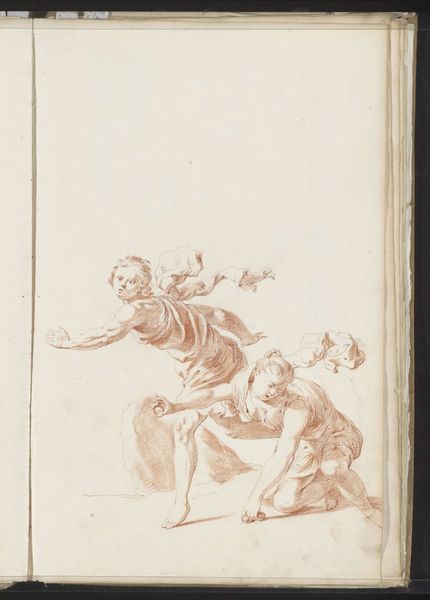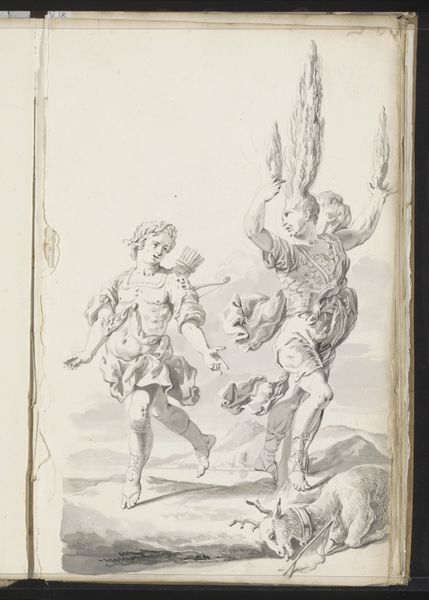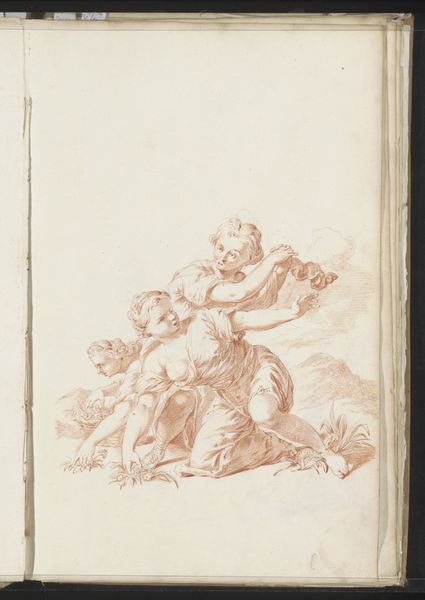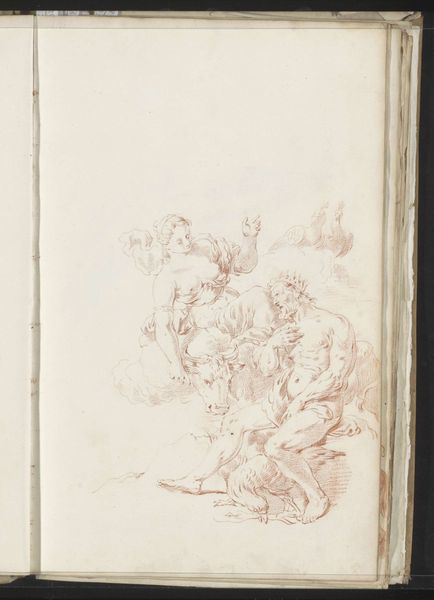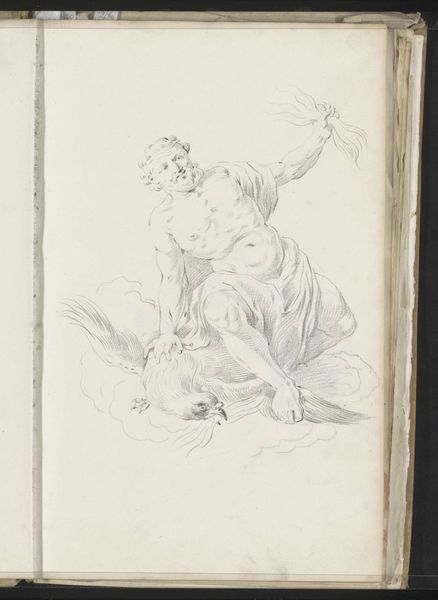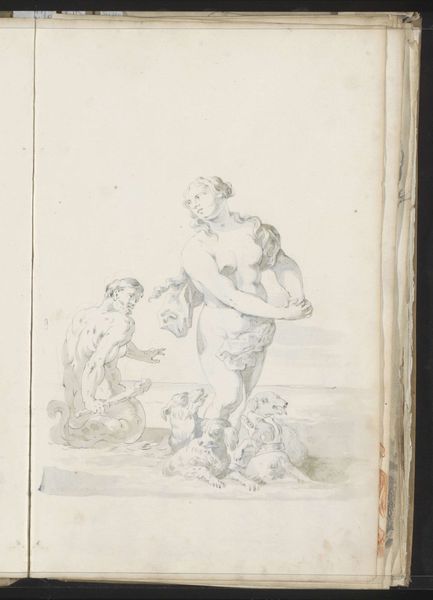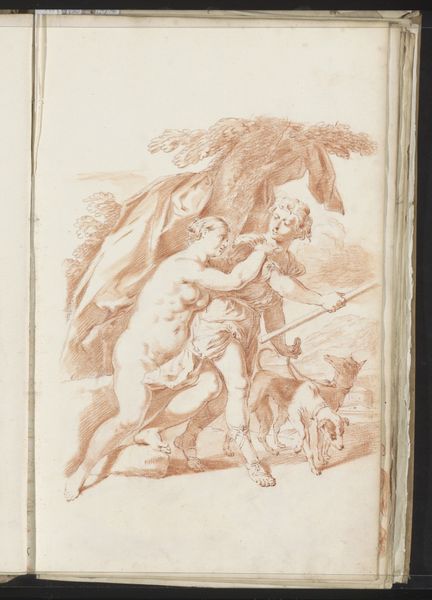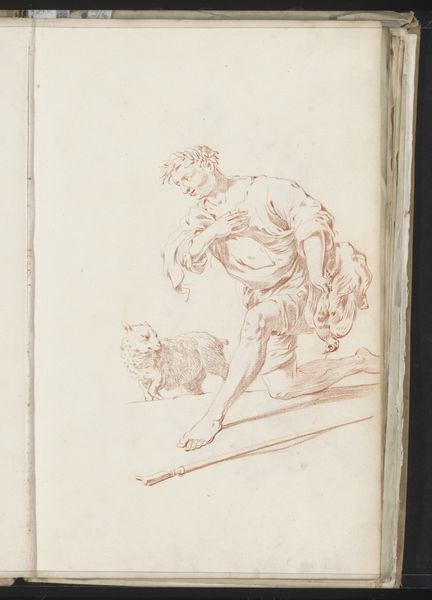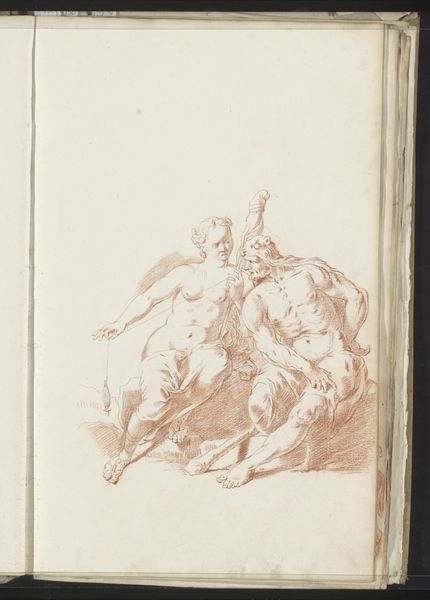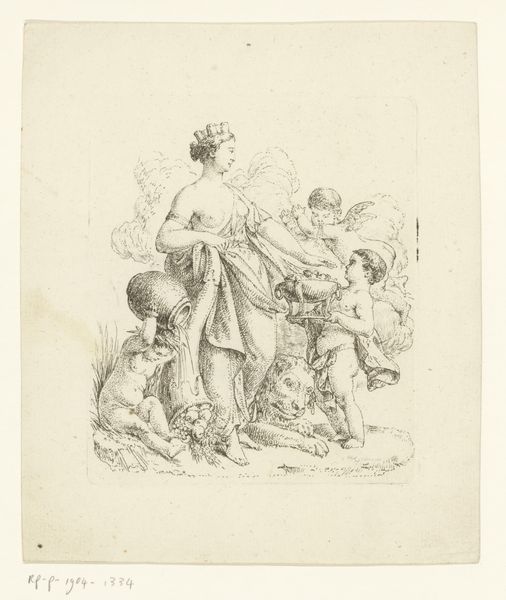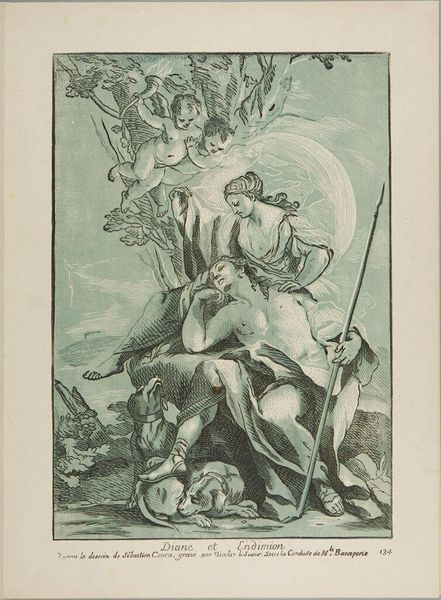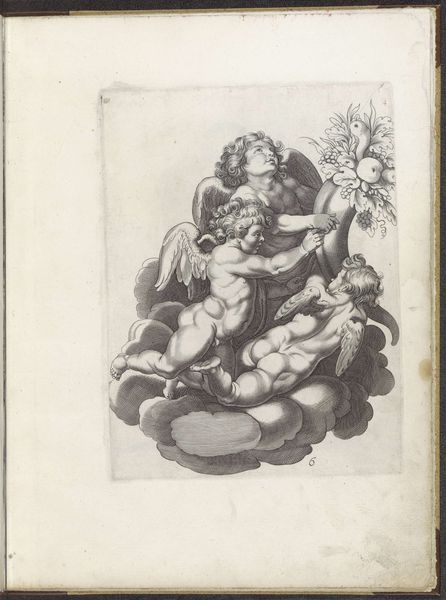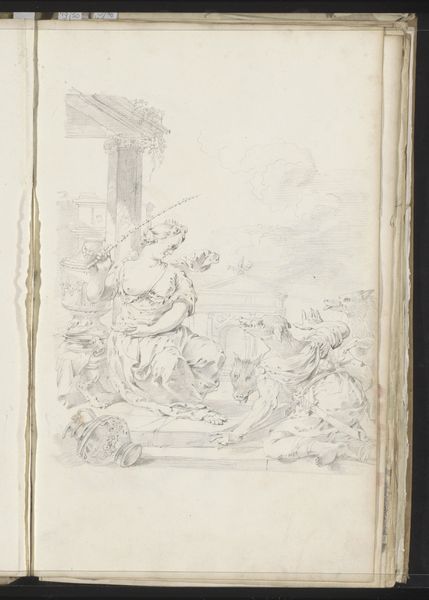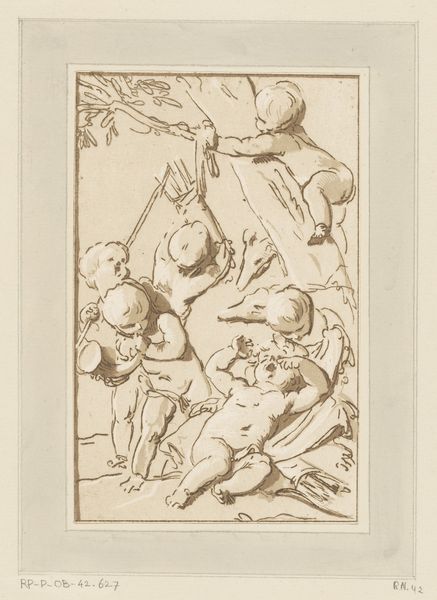
drawing, paper, ink
#
drawing
#
narrative-art
#
baroque
#
figuration
#
paper
#
ink
#
genre-painting
Copyright: Rijks Museum: Open Domain
Editor: Here we have Jacob Toorenvliet’s drawing, "Deucalion en Pyrrha," made around 1701 with ink on paper. I’m struck by the rather unusual, almost fleshy monochrome. What story do you think it's trying to tell? Curator: It’s a fascinating rendition of the Greek myth. The monochromatic pink wash, you see, does lend the scene an uncanny quality. It makes the figures appear both ancient and newly formed, like figures emerging from clay. It points to a new dawn, civilization reborn. Notice the stones they cast behind them? Editor: Yes, I do. They look almost like skulls in their hands, such strange, powerful imagery, but… where do the children come in? Curator: Precisely! Those "skulls," or stones, transform into humanity's seeds. Observe how Toorenvliet contrasts the stiff, formal gestures of Deucalion and Pyrrha with the frolicking children springing from the ground, emphasizing this shift from lifeless rock to vibrant humanity. What memories, would you say, is Toorenvliet evoking? Editor: So, it’s a cycle, death and rebirth… it’s hopeful but also…slightly unsettling, because it all begins from these stone-like objects, and those pale, new humans. Curator: Yes, the power of symbols, wouldn't you agree, lies in that very ambiguity? Toorenvliet has captured not just a narrative, but also that lingering echo of what came before, reminding us that every creation carries the memory of its origin. Editor: That makes the myth feel very current! It's less of a fairytale, more of a powerful symbolic commentary on history repeating itself and the promise of new beginnings intertwined. Thanks for highlighting that.
Comments
No comments
Be the first to comment and join the conversation on the ultimate creative platform.
